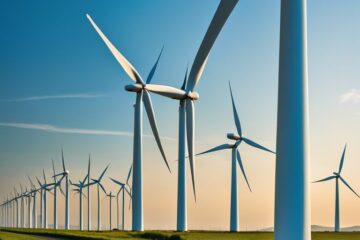Geothermal energy is energy stored in soil, rocks and fluids that fill pores and rock crevices. It is constantly supplemented by the flow of heat transferred from the hot interior of the Earth to the surface, which is why it is inexhaustible. The heat in the Earth’s interior is partly primary heat from the formation of our planet and partly is heat from the decay of radioactive elements such as uranium, thorium and potassium. The temperature increases with depth, reaching even 6,000 degrees Celsius in the Earth’s core.
Table of Contents
How does a geothermal power plant work?
Hot geothermal water, exploited through the production well with a submersible pump, is directed to plate heat exchangers located in the surface part of the installation. In the exchanger, geothermal water transfers heat to the water of an independent secondary circuit. The secondary circuit water supplies the consumers’ heating systems. The geothermal water-cooled in the exchanger is directed through an industrial pipeline to an absorbent hole, through which it is injected into the mother aquifer.
Types of geothermal power plants
Geothermal power plants operate similarly to classic steam power plants, if the bed temperature exceeds 300 ° C, they must have an additional circuit with a special working medium when the temperature of the Earth’s interior is up to 120 ° C. In an indirect case, the formation of water should be heated. On this basis, two basic types of geothermal power plants are distinguished.
Single-factor power plants
The first of these are systems that use geothermal resources as the only source of power. If the bed is in the form of steam, it is redirected directly to the turbine, while in the case of a liquid bed, the geothermal water is directly evaporated in the expander, which in the form of steam goes to the turbine. From there, after expansion, the steam flows to the condenser. The first method requires the thermal water to be in the state of dry saturated vapor or superheated vapor. The thermal efficiency of such power plants reaches 30 percent.
Two-factor power plants
The second type are two-factor power plants, the so-called binary, where hot water is directed to the heat exchanger (evaporator) – it acts as a steam boiler. The released heat goes to the second cycle – with a working medium with a low boiling point, which may be, for example, light hydrocarbons with a very low boiling point. The working medium here works according to the Clausius-Rankine cycle or the Kalina cycle, which is often considered a modification of the C-R cycle. The thermal efficiency of these power plants is between 10 and 15 percent. An example of a mixed system would be the very high source pressure water turbine front end and binary system.
Geothermal heating in the house
Earth energy can be used in virtually any building. For this purpose, the boiler room should be equipped with a ground heat pump. Ground source heat pumps, also known as geothermal pumps, use ground heat to heat houses and heat water. Thanks to the heat pump, energy can be taken directly from the ground. The developed ground heat is available all year round, regardless of the weather.

Our contributing author is a passionate advocate for eco-friendly living and sustainability. With a background in eco-life, they are dedicated to inspiring and empowering individuals to adopt environmentally conscious lifestyles. Through insightful articles, they share practical tips, innovative solutions, and thought-provoking perspectives to promote a greener, more sustainable world. Join them on the journey towards eco-smart living and discover how small choices can make a big impact. 🌱









